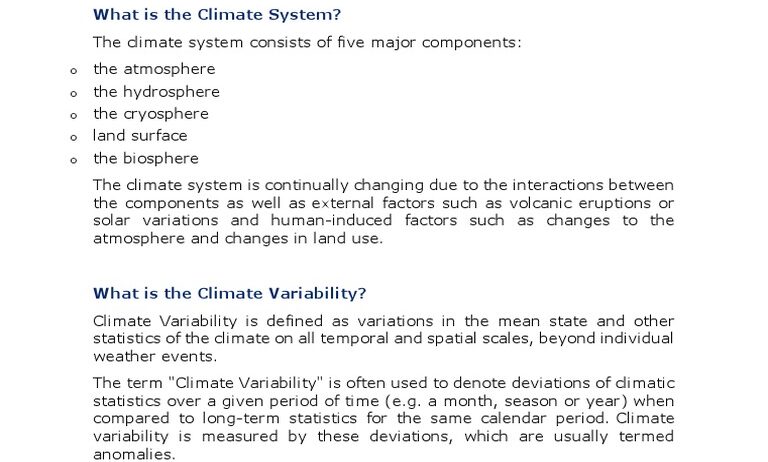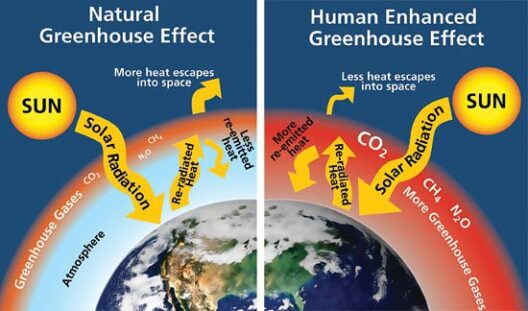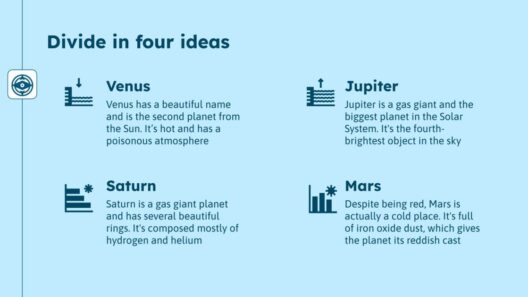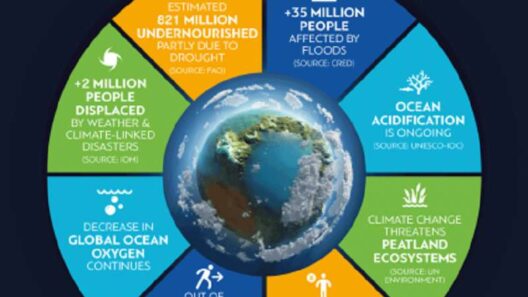Understanding climate is imperative for fostering a deeper connection with our planet and addressing the multifaceted challenges posed by climate change. The concept of climate encompasses not just the temperatures we experience, but also the complex interplay of atmospheric conditions, geological factors, and human impacts over extended periods. In order to grasp what climate truly means, we must dissect its definition, its components, and the tangible ramifications of our changing climate.
Defining Climate: Beyond the Weather
At its core, climate is defined as the long-term pattern of weather in a particular area, typically assessed over a duration of 30 years or more. This definition invites a distinction between weather and climate: while weather embodies the day-to-day conditions—sunny, rainy, stormy—climate represents the average of these conditions over an extended timespan. Understanding climate requires an appreciation for localized variances. For instance, the climate in tropical regions is vastly different from that in arctic environments.
Longitudinal assessments give rise to various categories of climate classification, most notably the Köppen climate classification. This system categorizes global climates into five main types—tropical, arid, temperate, cold, and polar—each subdivided into more specific classifications based on temperature, humidity, and seasonal differences. The implications of these classifications reach far beyond academic interest; they influence agriculture, settlement patterns, biodiversity, and even socio-economic conditions.
The Elements that Shape Climate
Several elements contribute to the overarching concept of climate, each interlinked in a delicate balance. Understanding these components is essential for unveiling the intricacies of climate systems.
Temperature is perhaps the most salient element, dictating the distribution of ecosystems and the viability of certain agricultural practices. Variations in temperature across different regions can lead to significantly divergent ecological and agricultural outcomes. For example, regions with consistently high temperatures tend towards desertification, whereas cooler climates may support lush forests.
Precipitation patterns are equally crucial, influencing not only natural ecosystems but also human water management strategies. Monsoons, droughts, and seasonal rainfall patterns characterize different areas and shape agricultural calendars and water resource management. Events such as El Niño and La Niña further complicate precipitation patterns, causing potentially catastrophic shifts in weather phenomena that can span the globe.
Additionally, atmospheric pressure systems, wind patterns, and ocean currents exert considerable influence on climate. For instance, the Gulf Stream helps moderate the climate of northwestern Europe, whereas the trade winds play an essential role in equatorial rainfall distribution. The intricate interactions among these elements define climatic zones and impact biodiversity, agriculture, and urban development.
The Stark Realities of Climate Change
In recent decades, the conversation surrounding climate has increasingly centered on climate change—a phenomenon characterized by long-term alterations to temperature and precipitation patterns. Human activities, particularly the burning of fossil fuels and deforestation, have exacerbated the greenhouse effect, resulting in global warming with far-reaching consequences.
One of the most alarming manifestations of climate change is the increase in extreme weather events. Hurricanes, droughts, wildfires, and flooding have surged in frequency and intensity, often leaving devastation in their wake. These events not only have direct repercussions on ecosystems but also long-term socio-economic impacts, particularly on vulnerable communities. The inability to adapt to these changing conditions can result in significant agricultural losses, displacement of populations, and increased poverty.
The ramifications extend beyond human experiences, compelling species to adapt, migrate, or face extinction. Biodiversity is at risk as habitats become increasingly uninhabitable due to climate variances. Ecosystems that have evolved over millennia are threatened by shifts in temperature and precipitation, leading to irreversible changes in species distribution and interactions.
Global and Local Mitigation Efforts
Addressing climate change necessitates concerted global efforts tailored to specific regional contexts. International frameworks like the Paris Agreement aim to unite countries in their commitments to reducing carbon emissions and limiting global temperature rise. However, local initiatives also play a critical role. Communities worldwide are taking innovative approaches to mitigate climate impacts, from sustainable urban planning to regenerative agriculture practices.
Furthermore, the transition to renewable energy sources is a pivotal strategy in reducing the carbon footprint. Wind, solar, and hydroelectric power offer alternatives that can help decrease reliance on traditional fossil fuels, addressing climate change at its roots. Educational initiatives emphasize the importance of individual actions, from reducing waste to advocating for policy changes that prioritize sustainability.
Understanding climate transcends a mere academic pursuit; it is crucial for ensuring a sustainable future for generations to come. The interrelations between climate systems, ecological health, and human society underscore the urgency of addressing climate issues comprehensively. Through collective action and informed understanding, we can strive to preserve our planet’s delicate balance.








